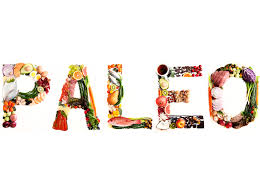Fact or Fad: What to know about two popular diets
Reflecting on National Nutrition Month, this year’s theme is, “Bite into a Healthy Lifestyle.” The theme focuses on the importance of making informed food choices and developing sound eating and physical activity habits to maintain a healthy weight, reduce the risk of chronic disease and promote overall health.
It sounds simple enough, but in the vast array of nutrition information and diet books promoting weight loss and health cures, it can be hard to decipher what “informed food choices” and “sound eating habits” are. Fad diets have increased dramatically since 1980, and The FadDiet Timeline shows how these different diets have come and gone over the years. Interestingly, a “low carb” diet first appeared in 1825 and made additional appearances in 1863, 1987, 1994, 2001 and 2012. An early version of the Paleo diet was popular in 1985. What is important to remember is that there is no magic diet or pill that will instantly burn fat and calories or change your genes, and some of the trends that involve dietary supplements are simply dangerous and even deadly. According the Academy of Nutrition and Dietetics, warning signs that a diet is too good to be true include diets that:
- Promise rapid weight loss
- Allow for unlimited amounts of certain foods like cabbage or grapefruit
- Eliminate an entire group of nutrients such as carbohydrates
- Prescribe eating certain foods, in certain combinations, at certain times
- Follow rigid menu plans
- Do not require you to exercise
Some recent trends include a Paleo diet and the Mediterranean diet. Whether these are worth trying depends on your individual health, lifestyle and goals. Below is a brief summary of each of these diets that should help you make your own informed choice.
The Paleo
The Paleolithic or “Paleo” diet is a newer version of the “Caveman” diet, first popularized in 1985. According to Academy of Nutrition and Dietetics spokesperson, Jim White, RDN, ACSM/HFS, “A quick and pithy definition of the Paleo diet is — if the cavemen didn’t eat it then you shouldn’t either.” This diet includes only foods that can be hunted, fished or gathered, such as meat, fish and shellfish, poultry, eggs, fruits and vegetables, roots and berries. It excludes grains, dairy, legumes (beans and peas), refined sugar and salt.
No whole grains or beans…already I see a red flag! While the idea of eating like our ancestors seems like a good idea, eliminating entire food groups that are an integral part of a healthy diet could lead to deficiencies in the long-term. The Dietary Guidelines are designed to be a whole foods approach to healthy eating. If followed, the average, healthy person should be able to meet the minimum nutrients required to prevent deficiency without supplementation. Food groups like dairy, whole grains, and legumes contribute a significant amount of protein, calcium, vitamins A & D and B-vitamins (like folate, which is especially important in preventing birth defects and contributes to heart health) to a healthy diet. Whole grains and legumes are also good sources of dietary fiber which may help reduce the risk of chronic disease (like heart disease, cancer and diabetes), as well as energy-packed carbohydrates which are comparatively low in the Paleo diet. Some studies also indicate that diary consumption may play a role in weight loss, and there is considerable support for the benefits of probiotics (healthy bacteria) found in yogurt. While there are ways to get these vitamins through other food sources, it requires more diligence, and my therefore, may not be sustainable for long periods of time.
According to a small review conducted by U.S. News & World Report, eating Paleo does have the benefit of making it easy to meet the Dietary Guidelines and recommended daily allowances (RDA’s) for potassium, protein, fiber and Vitamin B-12 (found in higher amounts in animal-derived foods). However, you are likely to fall short on calcium and Vitamin D. You can meet your calcium needs by consuming high amounts of dark green vegetables, nuts and seeds on a daily basis, but will be missing the dose of gut-healthy probiotics that regular yogurt consumption adds. It’s hard to get enough Vitamin D through foods, and eliminating fortified dairy or dairy alternatives, can make this even more difficult. Eating fatty fish and mushrooms exposed to ultra-violet (UV) light (strong sunlight) before cooking will provide some, but you may need to supplement this vitamin during the winter months.
Other factors to consider before jumping on the Paleo bandwagon include:
- Meat and fish are more expensive forms of protein than eggs, beans and legumes, especially the leaner cuts that have less saturated fat. You will also need to significantly increase fruit and vegetable intake (not a bad thing, but will likely increase the grocery bill)!
- Eating a well-balanced Paleo diet requires careful meal planning. Not all foods available to our ancestors are readily available today. White adds, “While strict conformity is not realistic, it is possible to modify the plan, eating only wild caught fish, grass-fed meat and organic fruits and vegetables.” On the other hand, some people find that having very specific meal plans and recipes, takes out the guess work. They are also likely to lose weight because it eliminates common snack foods (like ice cream, chips, crackers and other grain-based foods) which often contribute to weight gain.
- Cover-up. Any time you change your diet, there is the possibility that you will feel better. In fact, this is one of the reasons most people are able to stick with a particular plan. Similar to another trend of following a “gluten-free” diet, it’s hard to know if feeling better is the result of increasing foods high in antioxidants like fruits and vegetables or anti-inflammatory foods like fatty fish, or decreasing the added sugar and salt which may contribute to more healthy blood sugar levels and blood pressure, respectively. One risk of trying a diet that eliminates particular foods or food groups is that you might feel better because you are masking a food allergy, sensitivity or condition such as Celiac disease. Unfortunately, without reintroducing that food (sometimes in significant quantities for a few months), it may be difficult to accurately test for these conditions. The best advice is to be sure you discuss any symptoms or medical concerns with your health care provider before starting a new diet.
Bottom Line: Consider implementing the components of The Paleo Diet that have solid evidence as components of a healthy diet. Increase your intake of fruits and vegetables, nuts, seeds and fish. Know when organic is better (see the Environmental Working Group’s guide) and how to choose the best fish (Monterey Bay Aquarium’s Seafood Watch). Choose more grass-fed lean meats and sustainably raised poultry. Eat more carbohydrates and fats from fruits and vegetables such as bananas, apples, sweet potatoes, avocados and olives. But, also consider a serving of low-fat dairy or dairy alternative such as plain Greek yogurt (In contrast to the USDA’s MyPlate, Harvard’s Healthy Eating Plate recommends just one or two servings of dairy per day). Make any grains you eat whole grains, eat different varieties of them, limit those that contain added sugar and fat, and keep portions appropriate (in most cases, 1/2 cup, cooked or 1 oz). Whatever you choose, ask yourself if this is an eating plan you could sustain for the long-term, and if not, what would you need to modify to make it healthy and sustainable for you?
The Mediterranean
There is a significant amount of research supporting the benefits of eating a Mediterranean-style diet. Such benefits include: weight loss, a reduced risk of diabetes, lower blood pressure and blood cholesterol levels and a decreased risk for heart disease. New evidence being presented at the American College of Cardiology’s 64th annual Scientific Session in San Diego in March found, “Adults who closely followed the Mediterranean diet were 47 percent less likely to develop heart disease over a 10-year period compared to similar adults who did not closely follow the diet,” furthering support for the diet’s cardiovascular benefits.
While there is not one specific definition of the Mediterranean diet, an article published in the American Journal of Clinical Nutrition defined the Mediterranean diet as reflecting the “food patterns typical of Crete, much of the rest of Greece, and southern Italy in the early 1960‘s.” Specifically, this diet is characterized by an abundance of plant-based foods, including fresh fruit, vegetables, grains, beans, nuts and olive oil. It also includes moderate amounts of dairy (mostly cheese and yogurt), higher amounts of fish/seafood, some poultry, eggs, lean meats and moderate amounts of red wine, usually with meals. Part of the appeal of this diet is that it is satisfying and flavorful due to higher amounts of (mostly heart-healthy unsaturated) fat and the foods are readily available. Keep in mind that regular physical activity was also a part of the cultures who traditionally consumed this type of diet. More information on a Mediterranean-style diet and Mediterranean Diet (food) Pyramid can be found at Oldways.org.
Bottom Line: As long as you stay within your daily calorie goals, eating a Mediterranean style diet is a great option for most people and affords significant health benefits with few, if any, risks. If, however, you have specific food allergies, sensitivities or other nutrition-related health conditions (like nut, grain, dairy or legume allergies or Celiac disease), you may need to modify this diet to fit those needs.
In summary, if a diet sounds to good to be true, it probably is! Any diet that unnecessarily restricts certain food groups, may be lacking in essential nutrients and could potentially mask allergies, intolerances or other health conditions that may require strict adherence or avoidance and medical follow-up. What is most important is following a healthy eating plan that is balanced, sustainable over the long term, and can be adjusted to meet your changing health and wellness goals. For more information on healthy eating tips and to find a registered dietitian in your area, visit the Academy of Nutrition and Dietetics website, Eatright.org
References:
Academy of Nutrition and Dietetics. Staying Away from Fad Diets. http://www.eatright.org/resource/health/weight-loss/fad-diets/staying-away-from-fad-diets. Accessed March 7, 2015.
American College of Cardiology. “Mediterranean diet cuts heart disease risk by nearly half.” ScienceDaily. ScienceDaily, 4 March 2015. <www.sciencedaily.com/releases/2015/03/150304190222.htm>. Accessed March 8, 2015.
Willet, Walter C. “Mediterranean Diet Pyramid: A Cultural Model for Healthy Eating.” American Journal of Clinical Nutrition 61(suppl) (1995): 1402S-4026S. Http://ajcn.nutrition.org/content/61/6/1402S.full.pdf. American Journal of Clinical Nutrition. Web. 8 Mar. 2015. <http://ajcn.nutrition.org/content/61/6/1402S.full.pdf>.
“Mediterranean Diet Pyramid.” Mediterranean Diet Pyramid. Oldways, n.d. Web. 08 Mar. 2015. <http://oldwayspt.org/resources/heritage-pyramids/mediterranean-pyramid/overview>.
The Paleo Diet. Loren Cordain, Ph.D., n.d. Web. 8 Mar. 2015. <http://thepaleodiet.com/>.
“Should We Eat Like Our Caveman Ancestors?” Should We Eat Like Our Caveman Ancestors? Academy of Nutrition and Dietetics, 19 Jan. 2015. Web. 08 Mar. 2015. <http://www.eatright.org/resource/health/weight-loss/fad-diets/should-we-eat-like-our-caveman-ancestors>.
“Paleo Diet.” US News Health. U.S.News & World Report, 16 Jan. 2015. Web. 08 Mar. 2015. <http://health.usnews.com/best-diet/paleo-diet>.




